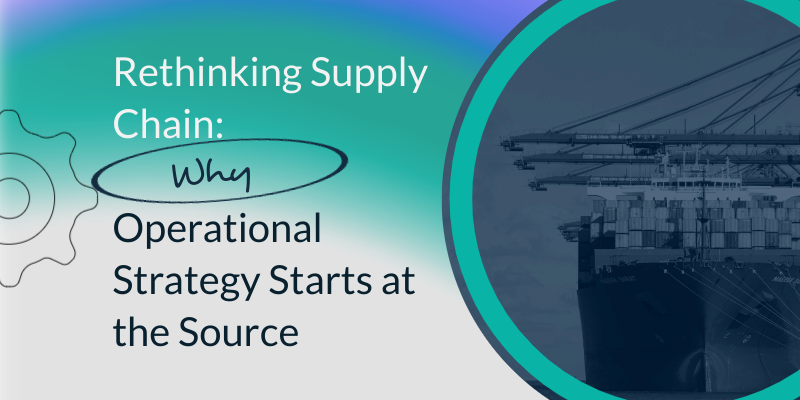Effective decision-making is a crucial aspect of a business leader’s role, serving as the backbone of successful management and strategy. However, many business leaders often rely on past experiences or gut feelings when making choices, inadvertently overlooking the nuanced complexities of the issues confronting them. This reactive approach, while occasionally effective for quick fixes, can lead to recurring challenges when the root cause of problems remains unaddressed, ultimately hindering growth and innovation within the organization.
In this blog post, we will delve deeper into the importance of making fact-based decisions over emotional ones, emphasizing the need for a data-driven approach that leverages analytics and objective insights. By harnessing the power of process and technology stack mapping, leaders can gain a clearer understanding of their operational landscape and the factors influencing their decisions. We will outline practical strategies and tools that can transform your decision-making process into one that is not only thorough and systematic but also sustainable and adaptable to changing circumstances. This comprehensive approach will lead to better outcomes and ultimately contribute to a more resilient and successful business.
Why Emotional Decision-Making Falls Short
The Lure of Experience-Based Choices<
It’s understandable why some leaders lean heavily on their experiences. After all, they’ve navigated challenging waters countless times throughout their careers, often emerging stronger and more knowledgeable. Their past successes and failures shape their decision-making processes, providing a sense of comfort and familiarity. However, these choices may not always be informed by the current context, which can be markedly different from what they faced before. Relying solely on past experiences can prevent the identification of novel solutions tailored to new circumstances, as the complexities of today’s challenges often demand fresh perspectives and innovative approaches. Embracing a mindset that values adaptability and open-mindedness is crucial for leaders who wish to thrive in an ever-evolving landscape. By balancing learned wisdom with a willingness to explore new possibilities, they can better position themselves and their teams for success.
Temporary Solutions and Their Consequences
Quick fixes are undeniably alluring. They promise immediate relief and provide a sense of accomplishment, allowing individuals or organizations to momentarily divert attention away from deeper, underlying problems. These solutions can often seem like a breath of fresh air in times of stress. However, when these solutions are not rooted in a thorough understanding of the core issues at hand, the problems tend to resurface. In fact, they can sometimes emerge with even greater complexity, leading to a cycle of temporary relief followed by renewed frustration.
Sustainable resolutions, on the other hand, require a commitment to deeper analysis and comprehensive understanding. This involves delving into the root causes of issues, exploring various perspectives, and considering long-term impacts. By focusing on sustainable solutions, individuals and organizations not only address the immediate symptoms but also work towards fostering a healthier and more resilient system. Ultimately, embracing this more thorough approach can lead to lasting change and prevent the recurrence of problems in the future.
The Cost of Unresolved Issues
When problems persist within an organization, the associated costs can be substantial and far-reaching. Unresolved issues can lead to missed opportunities, where teams fail to capitalize on market trends or innovative ideas that could drive growth. Inefficiencies may arise as processes become bogged down, causing delays and frustration among employees. Furthermore, unresolved problems can even lead to a loss of market share as competitors who address their own issues more effectively gain an advantage.
It’s important to recognize that the impact of unresolved issues extends beyond immediate consequences. Over time, these lingering challenges can significantly affect overall productivity, creating a work environment that stifles creativity and motivation. Additionally, the long-term profitability of the organization can be compromised, as resources are squandered on fixing recurring problems rather than investing in new initiatives. In essence, addressing issues promptly is crucial not only for maintaining smooth operations but also for ensuring sustainable growth and success in the competitive landscape.
The Importance of Fact-Based Decision Making
Data as a Guiding Star
In a data-rich environment, companies have access to vast amounts of information that, when properly leveraged, can guide decision-making. Data-driven decisions help ensure actions are based on facts rather than assumptions. This approach reduces uncertainty and enhances the potential for successful outcomes.
Improved Accuracy and Predictability
Using data to inform decisions increases accuracy and predictability. It provides a clear view of what is happening now and offers insights into potential future outcomes. This foresight allows for strategic planning and a proactive approach to problem-solving.
Building Trust Across the Organization
Decisions rooted in data foster trust and transparency within an organization. When team members see that decisions are based on objective criteria rather than emotion or bias, confidence in leadership grows. This trust can lead to increased engagement and collaboration.
Process Mapping as a Tool for Clarity
Understanding the Current State
Process mapping provides a visual representation of workflows within an organization. It helps leaders understand how various processes interconnect and identify inefficiencies or bottlenecks that may not be immediately obvious.
Identifying Root Causes
By laying out each step of a process, mapping can highlight where problems originate. Understanding these root causes is vital to developing solutions that address the underlying issues rather than symptoms.
Streamlining Operations for Efficiency
Once inefficiencies and root causes are identified, process mapping allows for the redesign of workflows. This optimization leads to more efficient operations, reducing waste and enhancing productivity.
Technology Stack Mapping for Strategic Alignment
Assessing Current Technologies
Technology stack mapping involves cataloging all the technology tools and platforms used within an organization. It provides a comprehensive view of existing capabilities and helps identify redundancies or gaps.
Aligning Technology with Business Goals
A well-mapped technology stack ensures that all tools and systems support the company’s strategic objectives. It helps organizations align their technology investments with their business goals, increasing overall effectiveness.
Facilitating Innovation and Agility
Understanding the full scope of available technologies allows organizations to innovate and adapt quickly. It creates opportunities for leveraging new technologies to gain a competitive edge and respond to market changes.
Steps to Implement Fact-Based Decision Making
Commit to a Data-Driven Culture
To successfully implement fact-based decision-making, organizations must commit to a culture that values data. This commitment involves investing in data analytics capabilities and training employees to interpret and utilize data effectively.
Utilize Technology to Enhance Data Gathering
Modern technology offers tools that simplify data collection and analysis. By leveraging these technologies, companies can access real-time data and insights that inform decision-making processes.
Encourage Collaboration and Input
Invite input from across the organization to gain diverse perspectives. Collaboration ensures that decision-making is informed by comprehensive insights, reducing the risk of overlooking critical factors.
Case Examples of Successful Implementation<
A Not-for-Profit Financial Institution Leverages Data to Drive Efficiency
A not-for-profit financial institution adopted a transformative strategy by implementing data-driven approaches aimed at significantly enhancing customer experience and expanding its diverse portfolio of services. By engaging in a thorough and careful analysis of the entire customer journey, project needs, and stringent compliance requirements, the organization gained invaluable insights into its operations and customer behaviors. This meticulous data analysis not only illuminated areas for improvement but also enabled the institution to streamline internal processes effectively. Furthermore, it allowed for the systematization of onboarding procedures, ensuring a smoother transition for new clients. Additionally, the insights gained facilitated the institution in meeting reporting obligations seamlessly, ensuring transparency and accountability while fostering trust among its stakeholders. Overall, this strategic shift not only optimizes operational efficiency but also enhances the overall satisfaction of customers, positioning the institution for sustained growth and success in the competitive financial landscape.
A Contact Center Streamlined their Technology Stack
A medium-sized contact center undertook a comprehensive approach by utilizing process and technology stack mapping to identify and eliminate redundancies within their operations. This meticulous analysis allowed them to streamline various processes, leading to a more cohesive workflow. As a result of this strategic alignment, they significantly enhanced their customer experience by reducing response times and improving service quality. Additionally, the careful mapping of their technology stack ensured data accuracy, effectively preventing the common inefficiencies associated with transferring information between different systems. By creating a seamless flow of information, the contact center not only optimized its internal operations but also fostered stronger relationships with its customers, ultimately contributing to greater satisfaction and loyalty.
Overcoming Challenges in Adoption
Addressing Resistance to Change
Transitioning to a fact-based decision-making approach may encounter resistance from team members who are accustomed to traditional methods. To effectively address this challenge, it is crucial to communicate the numerous benefits of this approach, such as improved outcomes and operational efficiency. Additionally, providing robust support throughout the transition, including open forums for discussion and feedback, can help ease concerns and foster a culture of openness and adaptability.
Ensuring Data Quality and Integrity
High-quality data is the cornerstone of reliable decision-making and is vital for the overall success of an organization. To achieve this, organizations must establish and maintain robust data governance practices that ensure data accuracy and consistency across all departments. This includes implementing regular audits, setting clear data standards, and promoting a culture that prioritizes data integrity, ultimately leading to more informed strategic decisions.
Investing in Training and Development
To fully leverage the power of data, it is essential to equip your workforce with the necessary skills to interpret data and utilize technology effectively. Comprehensive training and development initiatives can empower employees at all levels to contribute meaningfully to data-driven strategies. Offering workshops, online courses, and hands-on training sessions not only enhances employees’ skill sets but also fosters a sense of ownership and engagement, which is critical in driving the organization’s success in a data-centric environment.
The Role of Leadership in Driving Change
Setting the Tone from the Top
Leaders play a crucial role in driving the adoption of fact-based decision-making within an organization. By championing data-driven strategies and consistently modeling a strong commitment to analytics, they create an environment where data is valued and utilized. This leadership sets the tone for the entire organization, fostering a culture that prioritizes evidence over intuition and encourages all employees to embrace analytical thinking as a core part of their daily operations.
Empowering Teams to Make Informed Decisions
Encouraging teams to leverage data and technology in their decision-making processes is essential for fostering a proactive and informed workforce. By providing access to the necessary tools, resources, and training, organizations empower employees to make informed choices that positively impact their work and the overall success of the company. This empowerment allows teams to not only analyze data but also to interpret it effectively, leading to better outcomes and more innovative solutions.
Celebrating Successes and Learning from Failures
It is important to acknowledge and celebrate successes achieved through data-driven decision-making, as this reinforces the value of analytics within the organization. Recognizing individuals and teams that excel in utilizing data not only boosts morale but also serves as motivation for others to follow suit. Equally important is fostering an environment where learning from failures is encouraged. By analyzing setbacks and using them as opportunities for improvement and growth, organizations can refine their strategies and processes, ultimately leading to a more resilient and adaptable workforce.
Conclusion
Change is inevitable, and competition is relentless; therefore, making fact-based decisions is crucial. By identifying the root causes of challenges and employing tools such as process and technology stack mapping, organizations can set themselves up for sustained success. This strategy not only resolves immediate issues but also lays the groundwork for long-term prosperity. For those eager to enhance their decision-making processes, now is the time to take action. Harness data, optimize operations, and empower your teams to make informed choices that propel your organization forward. Explore the resources available to deepen your understanding and take the next step toward a more strategic future.







